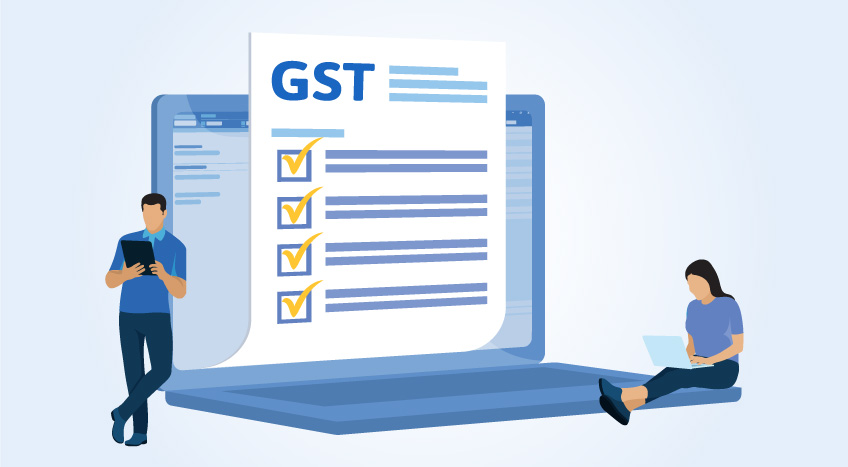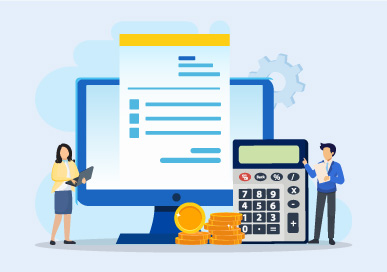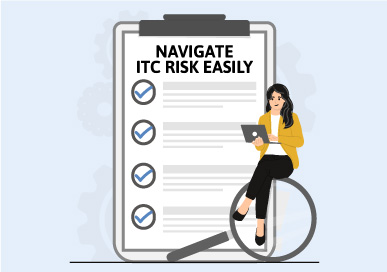- What is GSTR-2A
- What is GSTR – 2A reconciliation?
- Why is GSTR – 2A reconciliation important?
- Why is ITC reconciliation important for businesses?
What is GSTR-2A?
GSTR 2A is a self-generated statement where visibility of all incoming supplies made by your supplier in GSTR 1 has been made available to recipients. The details will be made available on the submission of returns in the portal. Apart from the details of GSTR 1, details operator from GSTR 5 (supplied by a non-resident taxable person), GSTR 6 (ISD), GSTR 7 (TDS Deduction) and GSTR 8 (collected by TCS e-commerce) will be self-generated.
What is GSTR–2A Reconciliation?
GSTR-2A reconciliation is a process of matching the invoices available in the GSTR-2A with the invoices recorded by a business in its books. The GSTR-2A reconciliation process helps businesses to match the invoices and find out the discrepancies, if any. As a process, ITC reconciliation is done at a different frequency, mainly on a monthly or fortnightly.
Example of GSTR-2A Reconciliation
The following is the inward and outward supplies of Super Cars Ltd. for the month of July:
|
Inwards Supplies of super Cars Ltd |
|||
|
Date |
Invoice No |
Supplier Name |
GST |
|
15-8-2022 |
6 |
Ratna Steels |
5000 |
|
10-8-2022 |
10 |
JM Steels |
10,000 |
- On12 August, JM steels upload the invoice to the GST Portal.
- On 15th August, Ratna Steels uploaded the outward supplies made to Super Cars Ltd.
When Supers Cars Ltd download the GSTR-2A on 16th August, the statement will show details of both the inward supplies. Now, Super Cars Ltd will match this with books of account, basically the purchase register to ensure that all the inward supplies they made are reflected in the GSTR-2A. In this case, both transactions match, and they will be fully eligible to claim ITC in GSTR-3B. This entire process of matching the invoices is called input tax reconciliation or GSTR-2A reconciliation.
Why is GSTR-2A reconciliation important?
Reconciliation between GSTR-2A and your purchase data is a crucial step in the GST compliance process for several reasons:
Accurate Claiming of Input Tax Credit (ITC)
- Verification of ITC Eligibility: The auto-generated summary includes all inward supplies based on the sales reported by suppliers. By reconciling this data with your purchase records, you can accurately determine the ITC you are eligible to claim.
- Avoiding Overclaims: Discrepancies between your records and GSTR-2A can lead to overclaims of ITC, which may result in penalties or additional tax liabilities if not corrected.
Ensuring Supplier Compliance
- Supplier Accountability: The reconciliation process helps verify that your suppliers have correctly filed their GST returns. If there are discrepancies, it may indicate that the supplier has not reported certain invoices or has made errors in their filings.
- Encouraging Timely Corrections: Identifying mismatches allows you to communicate with suppliers to rectify any issues in their GSTR-1 filings. This proactive approach fosters better relationships and accountability between businesses and their suppliers.
Avoiding Future Disputes
- Reducing Compliance Risks: Regular reconciliation minimizes the risk of non-compliance with GST regulations. By ensuring that all transactions are accurately reflected in both your records and the auto-generated tax statement, you can avoid potential disputes with tax authorities during audits.
- Documentation for Audits: A well-documented reconciliation process serves as evidence of due diligence. In the case of an audit, having reconciled records can demonstrate compliance and mitigate risks associated with discrepancies.
Enhancing Business Cash Flow
- Optimizing ITC Claims: Timely reconciliation ensures that you can claim the maximum eligible ITC, positively impacting cash flow. By ensuring that all eligible purchases are accounted for, businesses can optimize their tax liabilities and improve financial health.
Streamlining the GST Filing Process
- Facilitating Accurate GSTR-3B Preparation: The reconciliation process aids in preparing accurate GSTR-3B returns. When the ITC claimed in GSTR-3B aligns with the figures in GSTR-2A, it reduces the likelihood of errors during filing.
How to Perform GSTR-2A Reconciliation
A. Match Vendor Invoices with GSTR-2A
To perform GSTR-2A reconciliation effectively, follow these steps:
- Download GSTR-2A from the GST portal for the relevant tax period.
- Compare supplier-reported data with your purchase invoices.
- Verify key details, such as:
- Invoice numbers
- GSTIN of the supplier
- Invoice date
- Taxable value and tax amounts
- Identify mismatches that may include:
- Missing invoices
- Incorrect invoice numbers or dates
- Differences in tax rates or amounts
- Supplier not uploading the invoice in their GSTR-1
- In case of mismatch, communicate discrepancies with vendors and request corrections if needed (via GSTR-1 amendments).
- Maintain a reconciliation report to track matched, unmatched, and pending invoices for better ITC (Input Tax Credit) management.
B. Reconciliation: Steps to Follow
First Step: Downloading GSTR 2A
- Login into the GST portal > Click on Return Dashboard
- Select the return period
- In the returns segment click on Auto Drafted GSTR 2A
- Click on the Download link here (Note: You'll find the new option to Download as Excel)
- Click on Generate Excel File after which one have to Wait for 20 minutes to Generate the file
- After the lapse of twenty minutes, click on Generate and Click on “Click Here to Download Excel”
Second step: Uploading to TallyPrime
Open TallyPrime go to the relevant report section.
Load the downloaded data into the software.
TallyPrime will classify invoices as:
- Fully Matched
- Partially Matched: This may be due to partial match between invoices available in the books with invoices available on the GST portal.
- Available only in Books: This can happen if your supplier has not uploaded some invoices.
- Available only in Portal: This can happen if you have not recorded the transaction in your books, but your supplier has uploaded the same.
Final step: Taking action on mismatched invoices
- The registered taxable person can take action on the invoices which are mismatched, available only in books and available only in the portal by checking with your suppliers or correcting/recording respective purchase invoices in your books.
Why is ITC reconciliation important for businesses?
On January 1, 2022, the Finance Ministry launched the 100% invoice matching criteria and made it mandatory for all businesses. Essentially, any business that wishes to claim the ITC will have to show 100% parity between their filed returns and supporting invoices. This step was taken due to the earlier systems which had an allowance of 10% additional ITC, without supporting invoices to the claim, had to be reduced to 5% additional ITC and eventually removed altogether.
ITC reconciliation is important and relevant for all businesses because under the current GST paradigm, you will only be able to claim ITC if the concerned invoice is present in the GSTR-2A. This matching concept enables businesses on each side of the transaction to adhere to the GST code by the strictest of margins, by incentivizing transparency and punishing fraud or false return filings.
Coming Soon - TallyPrime New Release
- Auto Download GST Data: Automatically download GSTR-2A/2B, GSTR-1, and GSTR-3B data for seamless reconciliation.
- Connected Services for GST Invoices and Returns: Upload GST invoices and returns effortlessly via connected services.
- Direct Filing and Signing of GSTR-1: File and sign the GSTR-1 return directly from TallyPrime, simplifying compliance.
- Enhanced Outstanding Reports: Gain insights on ITC at-risk with improved outstanding reports.
- GSTN Integration: Fetch, validate, and create ledgers using GSTN, ensuring accuracy and compliance.
- Stripe-View in Reports: Analyze reports more easily with the new Stripe-View feature in all reports.
- Connected Banking: Stay connected to your business banking—track, record, reconcile, and collect payments seamlessly within TallyPrime, all without switching platforms.
- Samrt bank Reconciliation: One-click auto bank reconciliation with smart suggestions and assistance to help you match unreconciled transactions, available across leading banks.
- Invoice Management System (IMS): TallyPrime’s connected IMS solution enables you to seamlessly download, reconcile, and take actions—Accept, Reject, or Pending—directly within TallyPrime, keeping your books and IMS dashboard in sync.
- And Much More
Read more:
- What is GST Reconciliation
- What is GSTR 1 Reconciliation
- Why is GSTR-2A Reconciliation Important for Businesses
Explore More Products











